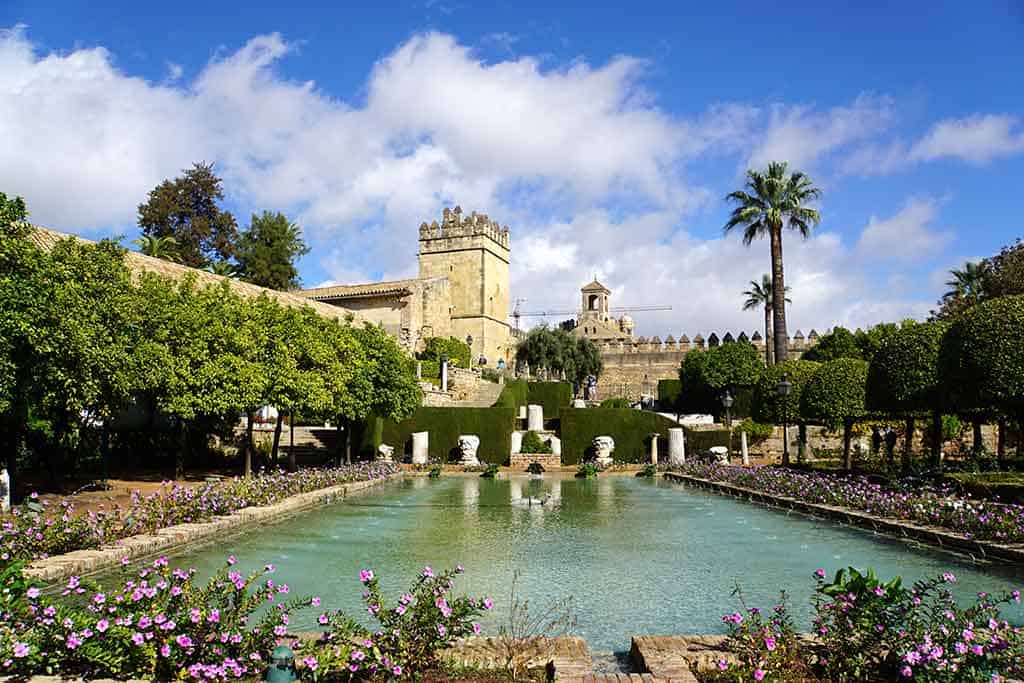Spain is an incredible country to visit with stunning beaches and ever-changing countryside, including the mountains of the Basque area and the open plains of Madrid. Spain is large, so there are regional differences in culture, food, wine, and dialects. Never be in a hurry when you are exploring Spain, as the tiny little-known places are the best and often, along with its people, make the greatest memories.
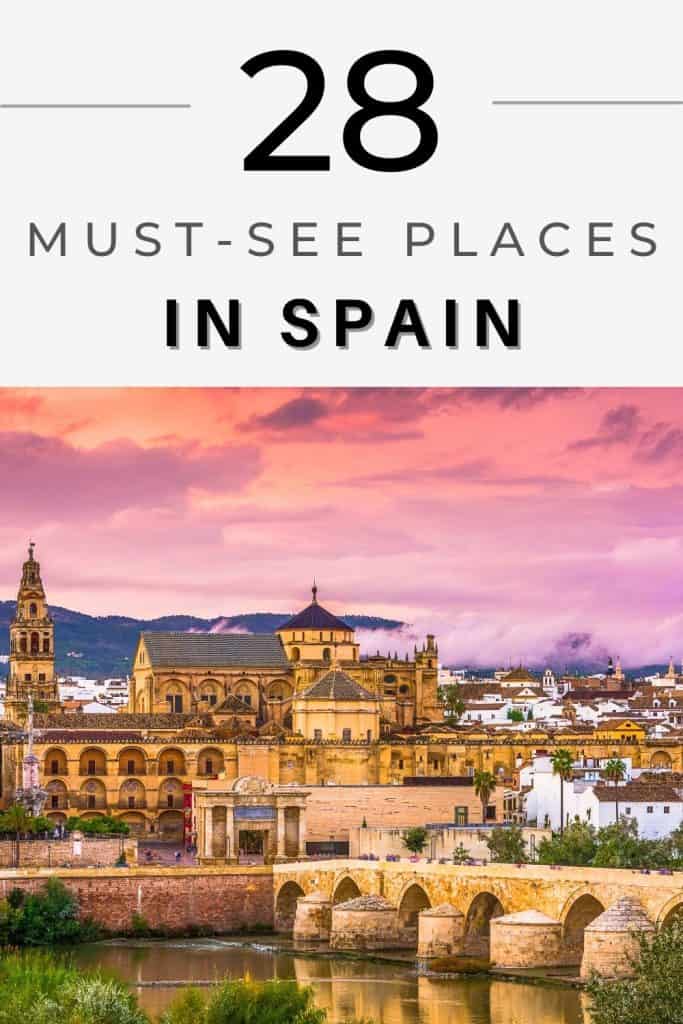
Table of Contents
28 Famous Places to Visit in Spain
1. Madrid
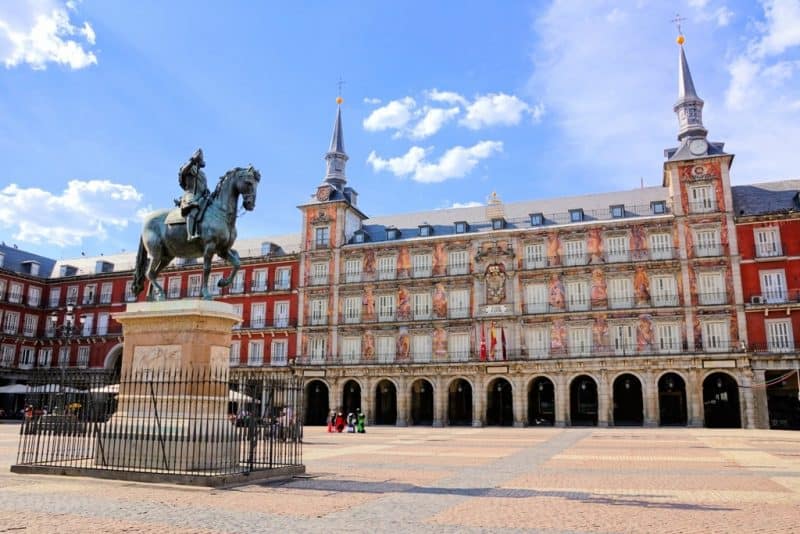
Spain’s capital city is situated in the center of the country and is a wonderful mixture of culture, elegant boulevards, and gorgeous green spaces like Retiro Gardens. The Prado is one of the greatest art museums in the world. The magnificent architecture of Madrid gives visitors an insight into the power of the Spanish Empire during the 16-17th centuries.
The Gran Via is the place to start exploring the city, as it is the focus for shopping and entertainment and buzzes all day and night. There are malls, cinemas, and theatres and late at night, the city’s top nightclubs burst into action.
Mercado San Miguel is Madrid’s art nouveau style indoor market that showcases the gastronomic delights of Spain. This is the perfect place to enjoy tapas and watch the world go by. In contrast, El Rastro on a Sunday is the huge flea market with 3,500 stalls for browsing.
2. Barcelona
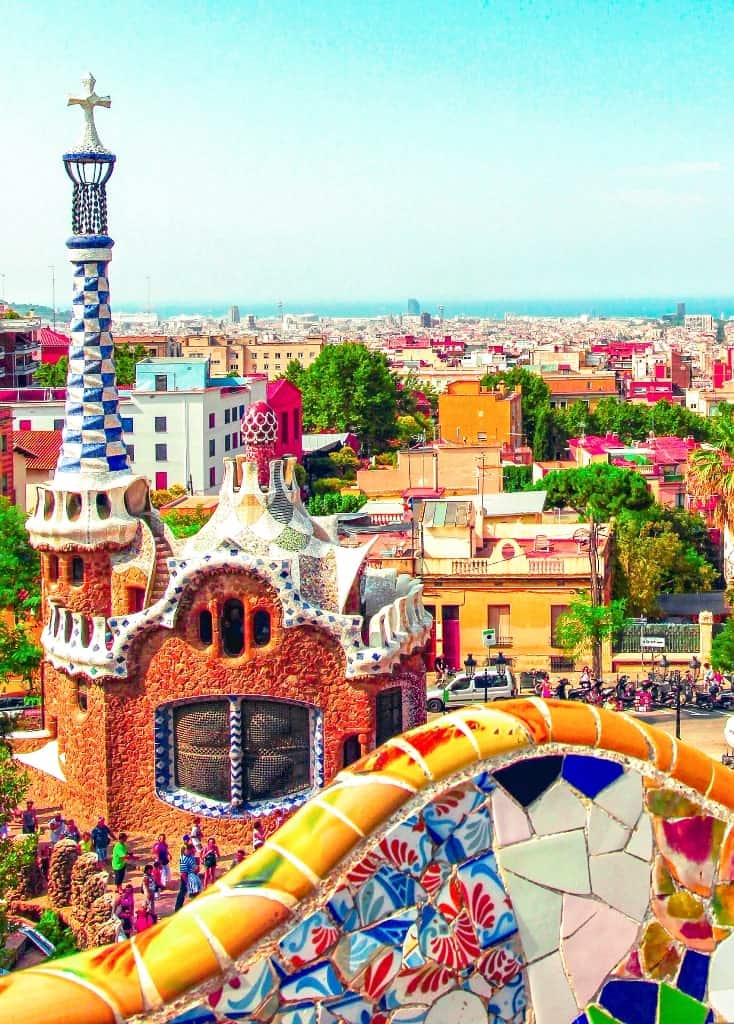
The second city of Spain and the capital of Catalonia is Barcelona. Cosmopolitan and famous for its art and architecture, Barcelona is a ‘must-see’ city with beaches, 20 Michelin stars for its food, and great nightlife.
The main pedestrian precinct is Las Ramblas with the Plaça de Catalunya fountains at the top end and the waterfront at the other. Las Ramblas has numerous side streets and shops and is where everyone converges. Barcelona is full of architecture by Antoni Gaudi and his best-known work is Sagrada Familia. Work continues on this lavish church. When it is finished, its spires will be the tallest church spires in the world.
Boqueria Market was built in 1914 with an iron and glass roof. It is a good place to enjoy pintxos – larger than usual tapas – including Pa amb tomàquet, which are circles of bread topped with tomato pulp and olive oil.
3. Valencia
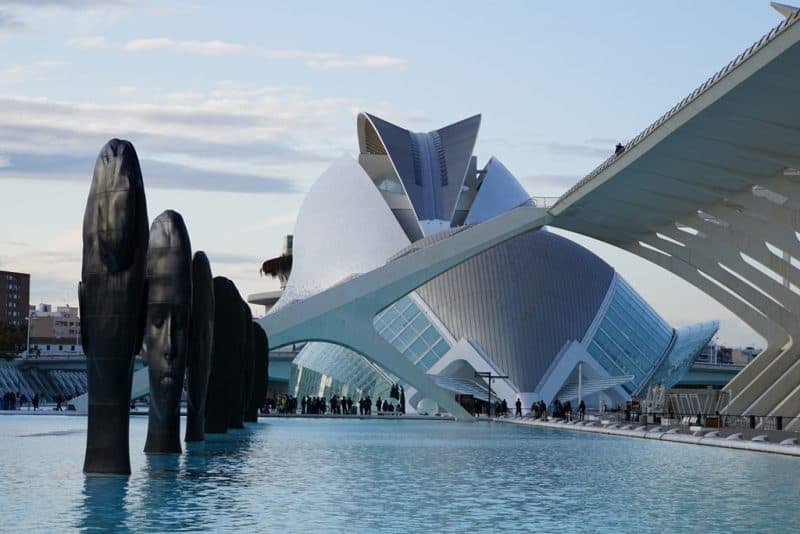
This fascinating port city on the south-east coast is known as the city of ‘arts and sciences’ and is also home to the most famous Spanish dish – Paella. The old part of the city is medieval. The most famous building is the 15th century UNESCO listed Lonja de la Seda – the Silk Exchange. Built when Valencia was one of Europe’s leading trading centers, this was where merchants from all over Europe would meet and deal. Valencia Cathedral was built in the 14th century and El Miguelette is its famous octagonal bell tower.
The amazing Oceanarium built in 2003, is the largest in Europe with 45,000 marine animals divided into ten geographical zones. The Planetarium is equally as dramatic and the interactive museum is lots of fun. Jardin del Turia is nine kilometers of green space running through the city center and was once the riverbed of the diverted river Turia.
4. Granada
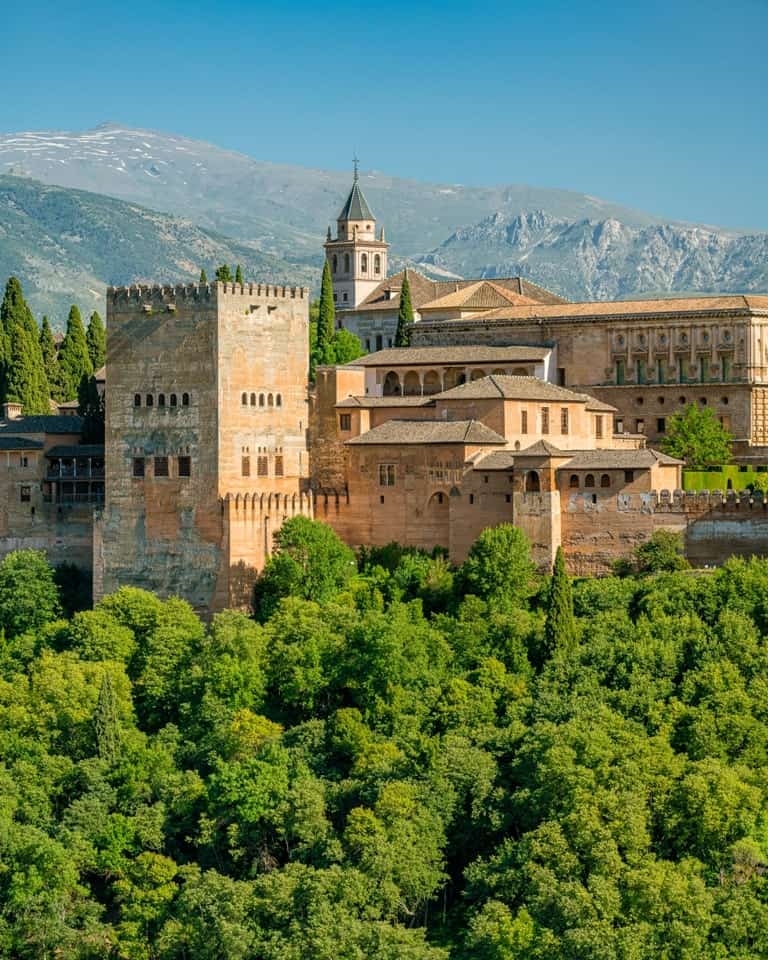
In the foothills of the Sierra Nevada mountains stands Granada. This city has a 700-year Moorish heritage. Its hilltop Alhambra complex is incredibly beautiful and Spain’s most visited monument. Built between the 13-15th centuries, it was home to the ruling Nasrid sultans. There is a fortress, palaces, courtyards, and gardens.
The 16th century Granada Cathedral is the second largest in Spain and was built on the site of the Grand Mosque. The cathedral has an impressive interior with numerous chapels. Next door stands the Royal Chapel, where several Roman Catholic kings are buried.
The old Moorish city is fascinating. In the Sacromonte district there are cave dwellings where flamenco dancers performed – and still do. Alcaiceria was once the Grand Bazaar, where traveling merchants sold fine silks and spices. Today, it is packed with souvenirs including Fajalauza hand-painted ceramics. Enjoy tapas in Granada as it was born in the Andalusia region.
5. Seville
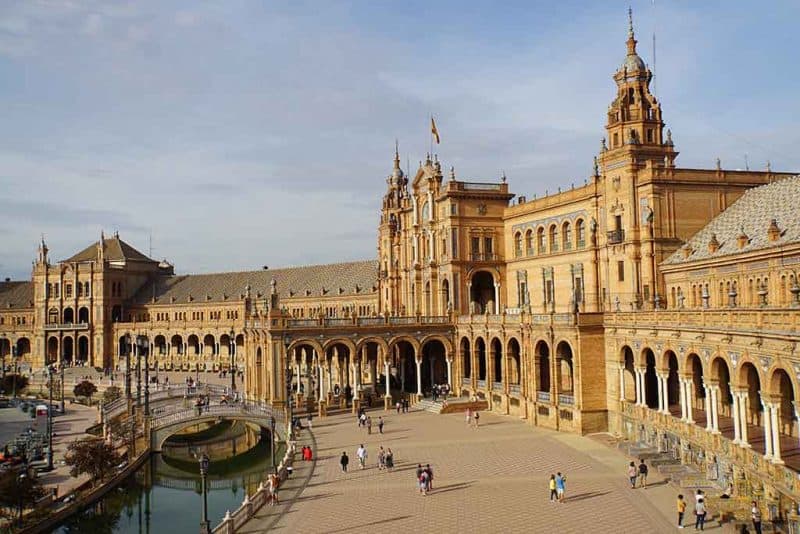
Capital of the southern Andalusian region and rich in Moorish heritage, Seville is famous for flamencos, tapas, and oranges. In the springtime, it is filled with the perfume of jasmine and orange blossom. Seville Cathedral is the largest in the world and has 80 chapels inside, plus the tomb of Christopher Columbus. Next to it stands La Giralda – the bell tower which was once a minaret. Climbing up it inside, there is no staircase, but 34 ramps so the muezzin who called prayers could reach the top on horseback!
Other places to visit include the 14th century beautiful Real Alcázar Palace, still used by the Spanish royal family, the huge curved monument of Plaza de España, the Maria Luisa Park, and the Triana neighborhood (bullfighting arena) on the other side of the Guadalquivir river. At Plaza de Altzano you will see the famous statue of a flamenco dancer.
6. Córdoba
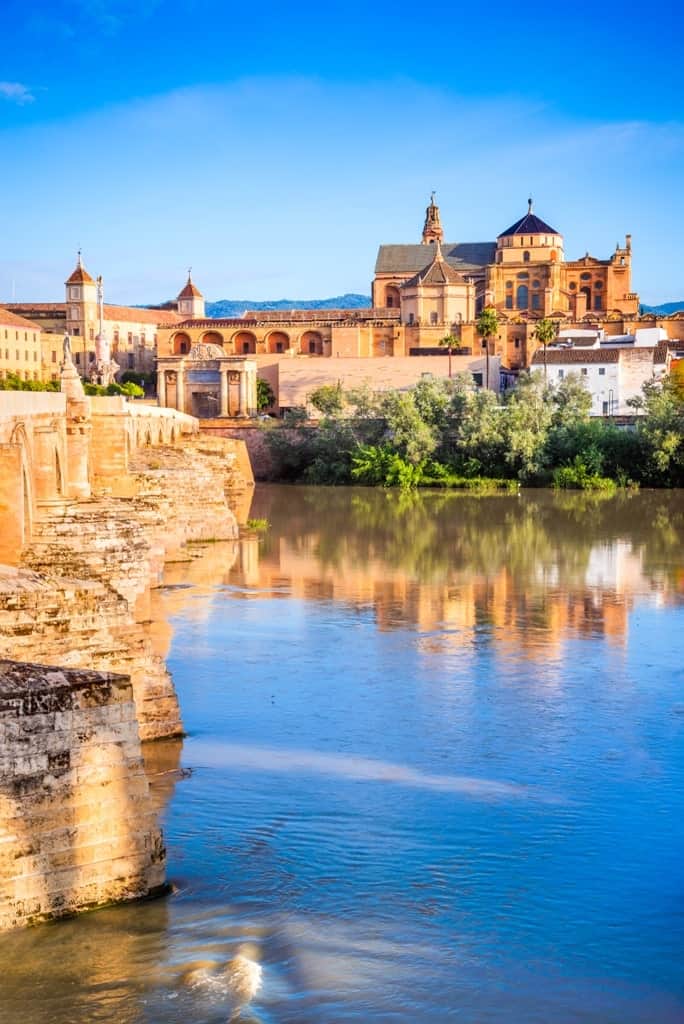
1,000 years ago, Córdoba in southern Spain was the largest city in the world and the capital of the Caliphate of Córdoba which controlled much of the Iberian peninsula. Today, in the old town stands the magnificent cathedral of Córdoba which was once a mosque. It dates from the 900s when the city was Europe’s leading city for science and culture, it became a church in 1276 and is well known for its 850 columns and distinctive horseshoe archways.
Alcazar de Los Reyes Christianos is a huge royal compound and its gardens alone cover 55,000 square meters. The historic center of the city is delightful to explore on foot, through winding alleyways with inner courtyards. The cobble-stoned streets of what was the Jewish Quarter are also very attractive. There is the Augustan bridge over the Guadalquivir, Calahorra Tower, and Medina Azahara to see, so visitors are never lost for things to do!
7. Burgos
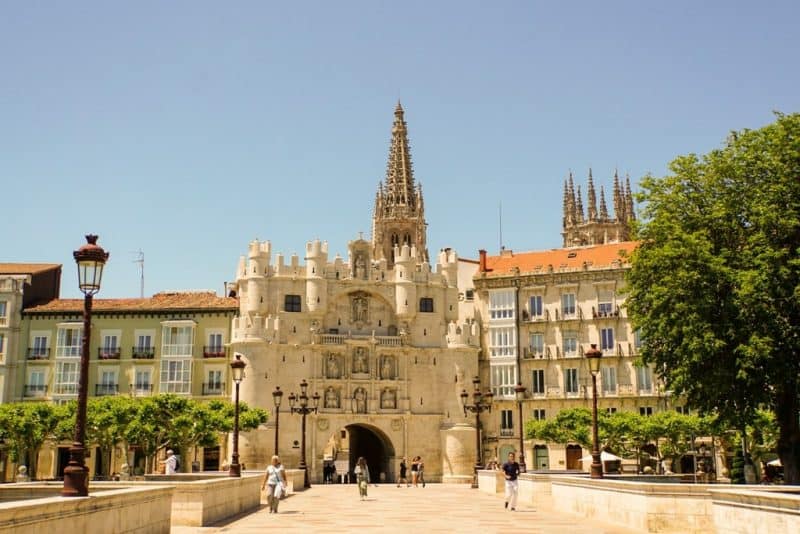
Situated in northern Spain, Burgos sits on the famous Camino de Santiago. This delightful medieval city has plenty of interesting places to explore, beginning with its mighty cathedral. The inside of this magnificent building is impressive and the main altar is decorated with statues adorned with gold leaf. In complete contrast, the Museum of Human Evolution is very modern and thought-provoking. The most prized exhibit is the human skeleton uncovered at the nearby Atapuerca archaeological site, which is believed to be the oldest in the world.
The castle stands high above the city, but it is worth the effort to climb up to see it, as the views are incredible. As you walk back through the Old Town, be sure to see the impressive old gateway, decorated with statues of kings and noblemen. Another place worth visiting is Monastero de las Huelgas, one of the best-known monasteries in Spain.
8. Pueblos Blancos (White Villages) of Andalucia
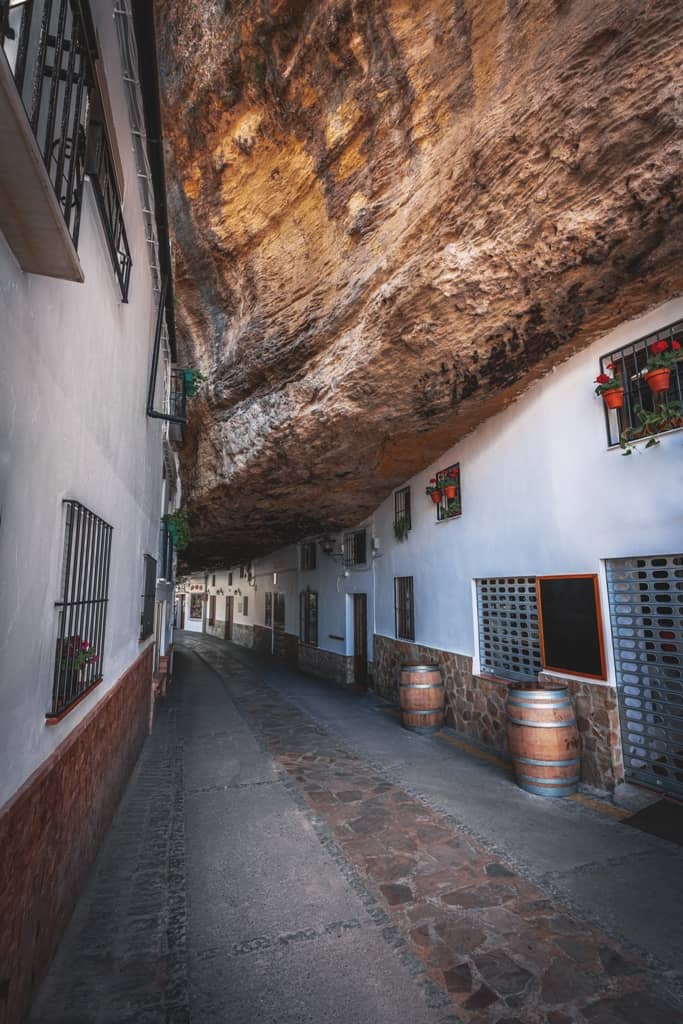
Get well off the beaten track and explore the white villages of Andalucia, surrounded by mountain scenery. They are situated in Sierra de Grazalema and the Sierra Nevada and the only way to see them is by car- which can be completed in one day. All the villages have small white-washed houses and a daily life that has changed little in generations.
Several of them are situated in National Parks, whilst Salobeña enjoys a climate perfect for growing sugar cane and tropical fruit. Setenil de las Bodegas has amazing houses built under the overhanging rocks and in caves. Zahara de la Sierra is famous for its Fiesta del Corpus Christi at Easter. Ronda’s International Folk Festival in late August/ early September attracts folk dance groups from 50 countries. Later in September, Feria Goyesco sees villagers dressing up in 18th-century costumes and there is a large bullfight.
9. Mallorca (Majorca)
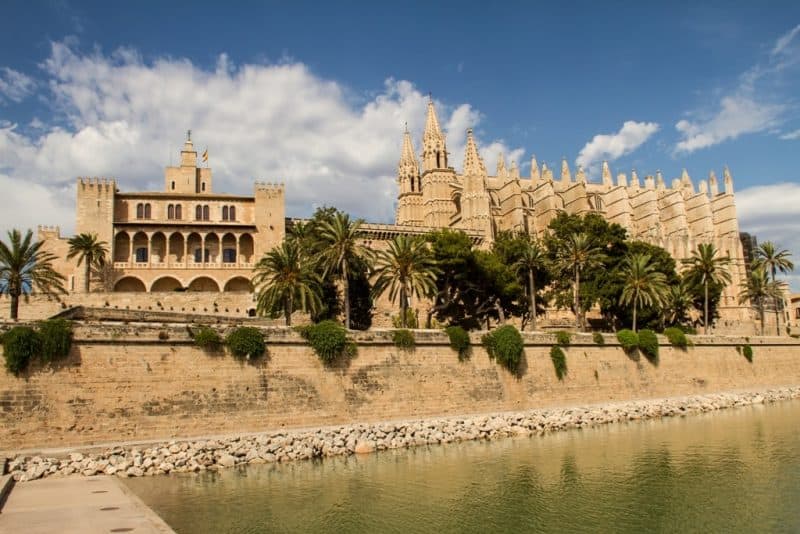
This beautiful island is one of the Balearic Islands in the Mediterranean, known for its mountains, villages, gorgeous beaches, and secluded coves. Mallorca is a popular holiday island, so there are several large resort towns, with hotels, pubs, and souvenir shops, but there is another side to the island, that is very unspoiled and Spanish. Palma, the island’s capital, is rich in history with the Almudena royal palace and cathedral. The cathedral has visually stunning architecture and an interior designed by Antoni Gaudi.
Getting around Mallorca is easy. Santa Catalina is an attractive neighborhood with a huge indoor market. A must-see is the pretty fishing village of Cala Figuera and the nearby large sea arch of Es Pontàs. Cap de Pera, with its lighthouse and views, is great for hikers and the sunsets there are very romantic. A sunrise hike in the mountains near Sóller is equally memorable.
10. Toledo
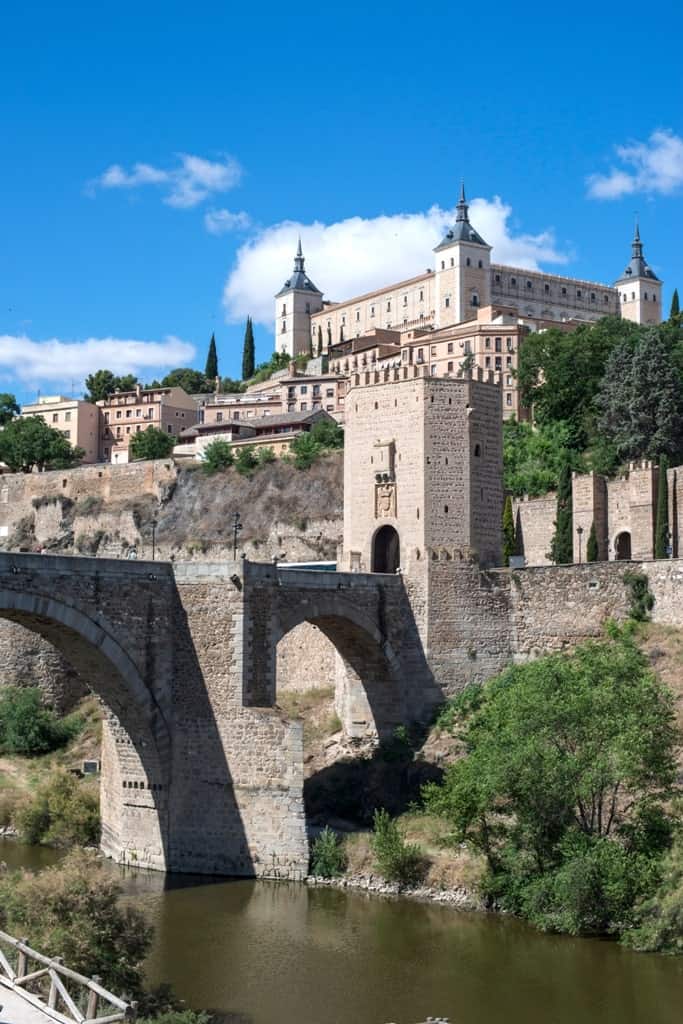
By Emily from Wander-Lush
Known as the Imperial City, Toledo in Castilla-La Mancha is one of the best places to visit in Spain for history and culture buffs.
A UNESCO World Heritage Site since 1986, Toledo’s urban landscape embodies the mix of Christian, Jewish, and Moorish influences that characterize this part of the country. The city’s main landmarks, including the Bisagra Gate, Plaza de Zocodover, and stunning Santa Maria La Blanca Synagogue, are each an architectural delight to behold.
The iconic Renaissance artist El Greco lived here for a time, and visiting his museum is now a must-do in Toledo. Walk the Don Quixote literary trail that winds through the city’s charming streets, stopping for a traditional marzipan treat at Santo Tomé, before crossing the emerald-green Tagus river via the 14th-century San Martin’s pedestrian bridge. Every footstep you take in Toledo is steeped in history and tradition.
Toledo can be reached from Madrid by road or train in just over an hour, making it a convenient day trip from the capital.
11. Picos de Europe
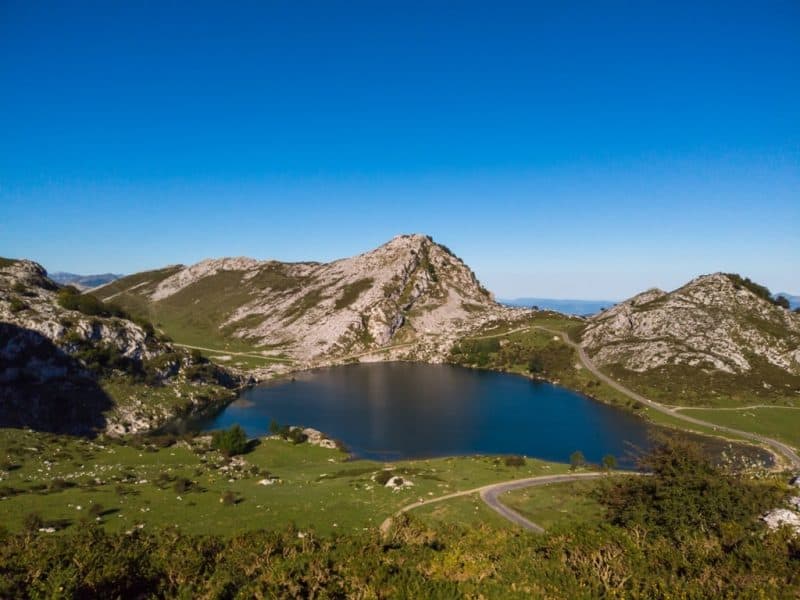
By Kevin from Kevmrc.com
Picos de Europa is the first National Park in Spain, and it’s definitely one of the best places to visit in Spain. Created in 1918 around the Lagos de Covadonga, it has since greatly expanded. It now spans over 3 regions of Spain: Castilla y Leon, Asturias, and Cantabria.
If you love hiking, then you’re in luck; there are plenty of epic hikes in Picos de Europa:
- Lagos de Covadonga hike
- Ruta del Cares
- Poncebos to Bulnes hike
Even if you’re not up for long hikes, don’t worry. You can literally drive to some pretty amazing places, like the Lagos de Covadonga, 2 alpine lakes in the heart of the mountains. The lakes will be a few footsteps away from the parking spot.
And of course, you shouldn’t miss the Teleferico Fuente Dé. The cable car will take you high up the mountains, where you’ll have an absolutely epic view over the valley below.
12. Fuerteventura
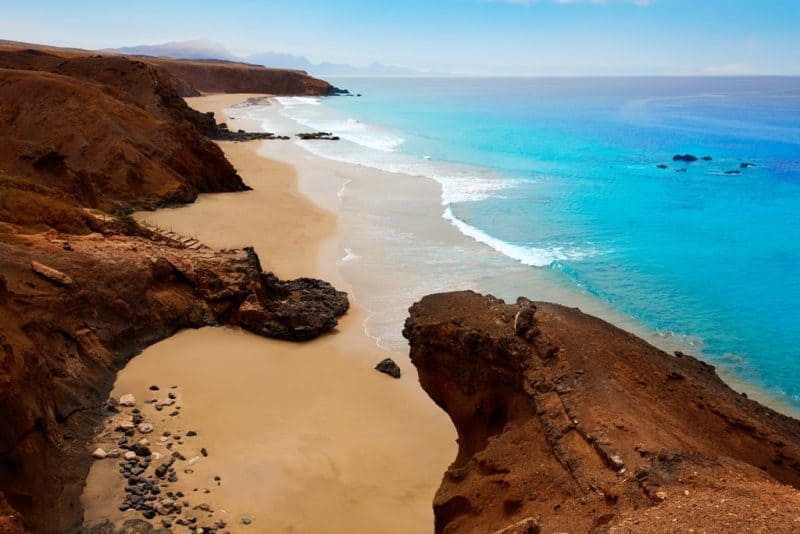
By Ucman from Brown Boy Travels
Weirdly shaped, not much talked about with a name that doesn’t roll off the tongue smoothly any which way, Fuerteventura is an underrated island. The Canary Island gets all the publicity but not many people know or care to know about this beautiful island which has its own international airport, ferry port, and plenty of things to see and do.
The sunsets from the lighthouse in El Cotillo and the beaches of Playas Grandes are in the north. Morro Jable has some stunning beaches in the south with a distant view of Lanzarote and the entire coastline is full of beaches, one more stunning than last.
Fuerteventura is also famous for its kite surfing scene and has a few schools for all levels, the wind is just perfect for the sport, other water-sports are also popular here. The island itself is beautiful with vast desert landscapes in all shades of red, it almost feels like Mars.
Fuerteventura is definitely a place you fall in love with and visit more than once.
13. Monserrat
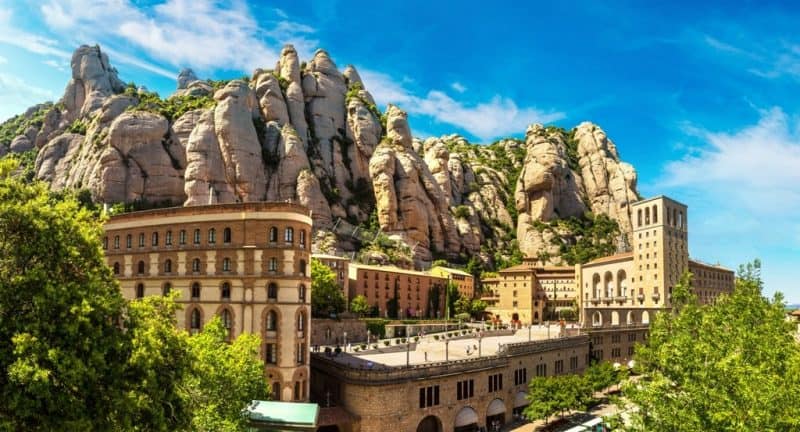
By Michael from The World Was Here First
One of the best places to visit in Spain is the beautiful region of Montserrat. Located only about one hour from the Catalonian capital, it’s incredibly easy to visit Montserrat as a day trip from Barcelona or stay overnight if you really want to get to know the area.
Montserrat is famous for its jagged mountain scenery and there are a number of different activities that travellers can enjoy when visiting.
One of the most popular things to do is hike one of the well-marked trails in the region – for example, you can enjoy a 20-minute walk up to Sant Miquel’s Cross or tackle a longer trail such as the 3-hour walk to Sant Jeroni.
If you prefer not to hike, you can instead ride one of the funiculars to places such as to Santa Cova (translated to Holy Cave).
Finally, perhaps the most famous attraction in Montserrat is to visit the Santa Maria de Montserrat Abbey where the statue of the Virgin of Montserrat is believed to have healing powers.
14. Girona
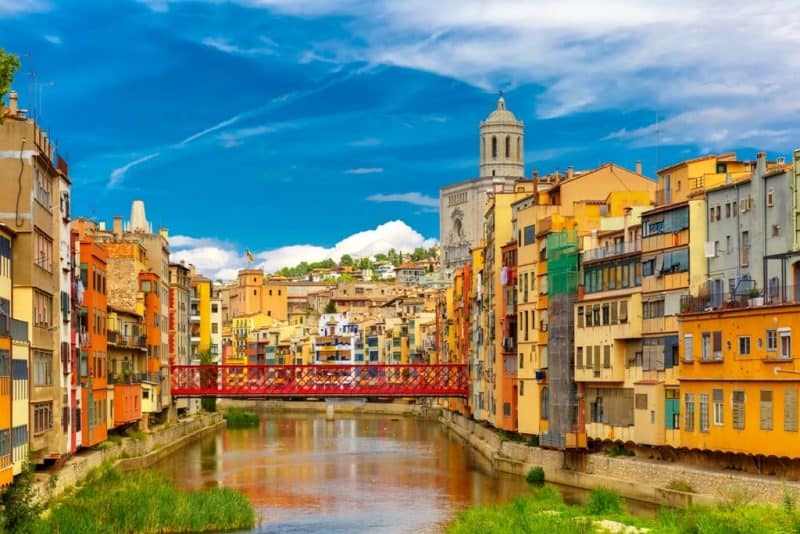
By Claudia Tavani, My Adventures Across The World
Most people completely overlook Girona thinking this is just a budget airport hub great to land when heading to Barcelona, or – at most – visit on day trips from Catalonia’s capital. It’s a pity though because Girona has a lot to offer and is a great place to spend a few days.
The capital of Costa Brava sits between the Pyrenees (being a good starting point for some adventurous hikes); it’s close to the Volcanic Region of Garrotxa, and at a stone’s throw from the lovely coves of Costa Brava.
Should you decide to spend a few days there, you will find plenty of things to do in Girona. The historic center is truly well kept: you will spot lots of colorful buildings, scenic plazas, and lots of lovely small local shops. Head to the river for the lovely views of the colorful buildings, and cross Eiffel Bridge (build by the same Eiffel who designed the Eiffel Tower!) to reach one of the access points to the City Walls. You can walk along them for impressive views of the city, and to reach the beautiful Cathedral, in front of which there is an impressive staircase.
Other places you should not miss are the Jewish Quarter and the Arab Baths.
Girona also has lots of good museums and art galleries, and an incredible restaurant scene. The most famous restaurant is El Celler de Can Roca – which however you need to book in advance.
15. Gran Canaria
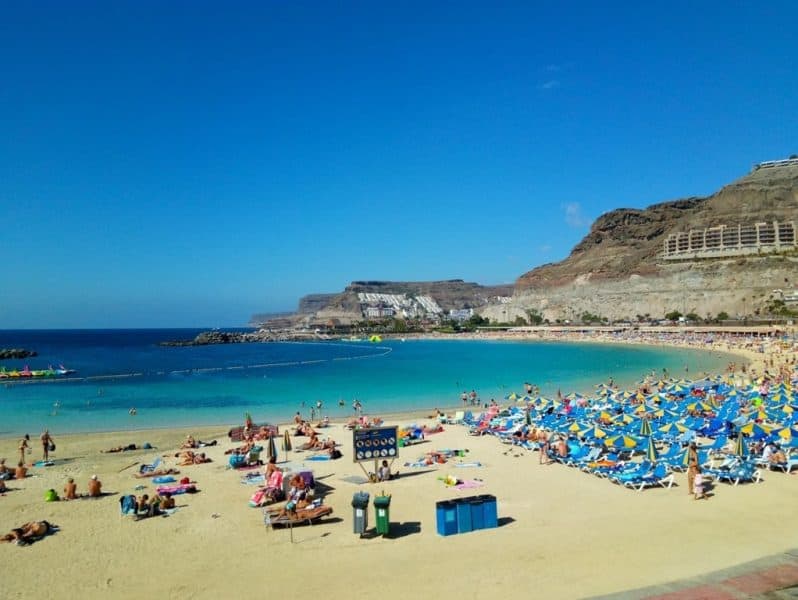
By Stefan Arestis of Nomadic Boys gay travel blog
Gran Canaria is one of the main islands of Spain’s Canary Islands archipelago, located off the coast of northwest Africa. We love them because whatever time of year you choose to come, you’re always guaranteed sunshine and beach – even in the cold winter months.
Maspalomas and Las Palmas are the main cities of Gran Canaria where most will base themselves. Maspalomas is also where the bulk of the island’s nightlife can be found, particularly the gay scene of Gran Canaria in the Yumbo Centre, which has become world-famous! Gran Canaria has some spectacular landscapes to explore.
The most famous is the UNESCO listed Roque Nublo, located right in the heart of the island. It is an 80-meter-high rock, created by volcanic eruption millions of years ago. Other highlights of the island include sailing trips, water sports (like jet ski), scuba diving, snorkeling, and a camel ride along the Maspalomas Nature Reserve.
16. Santiago de Compostella
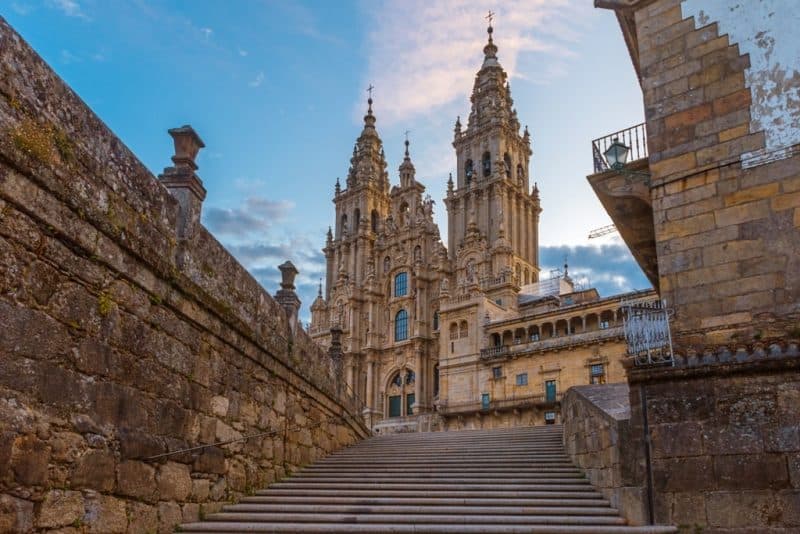
By Dave Chant, www.davechant.com
Santiago, or Santiago de Compostella to give its full name, is the capital of the autonomous region of Galicia in North West Spain. It is widely known as the destination for pilgrims walking the Way of Saint James, the Camino de Santiago. It’s said that the apostle James remains were brought back here after his death, and later a shepherd was led by a light to a field where he rested – legend has it that Compostella is from “campus stellae”, literally the field of stars, after this story.
It’s a beautiful place to spend time and, with only 100,000 residents, feels more like a big village than a city. It’s compact and its old town was granted UNESCO status in 1985.
The Cathedral is one of the main attractions, and it’s a great place to watch pilgrims come into the city after walking hundreds of miles. It’s being renovated till 2021, but hopeful soon masses will re-occur and the famed “botafumeiro”, the smoke spreader, will be used again in the services.
Other than the Old Town, the Alameda Park makes a nice afternoon stroll, but then it’s just about soaking up the atmosphere. You may never want to leave.
17. Oviedo, Asturias
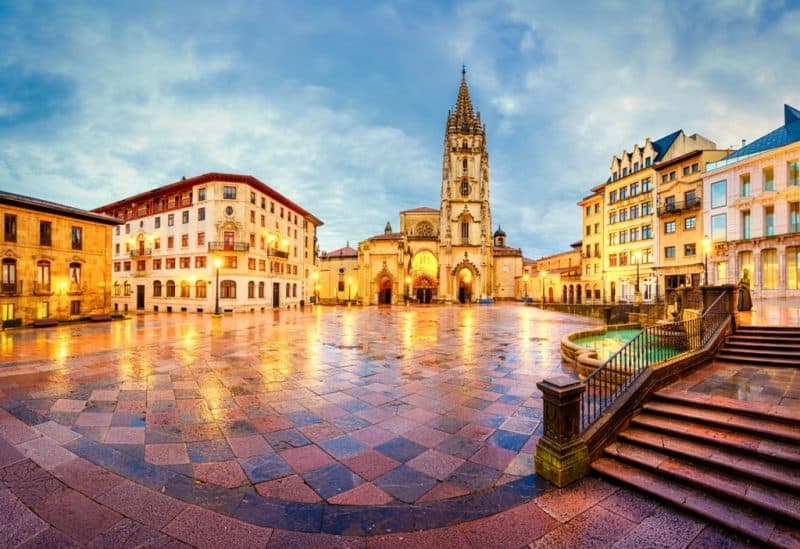
By Ben Holbrook from Driftwood Journals
Think of Spain and it’s likely you think of the flamenco dancers of Seville or Gaudi buildings in Barcelona, but there’s so much more to this dynamic country than you could ever imagine. For a big surprise, head to northern Spain – or “Green Spain” as it’s known due to its verdant landscapes – to the principality of Asturias.
Famed for its friendly people, hearty food, and zesty hard apple cider, this mountainous coastal region boasts its own unique Celtic culture (they play bagpipes and everything!). There’s plenty to explore, but be sure to set plenty of time aside to get to know Oviedo, the region’s colorful capital.
Hop from plaza to plaza, seeking statues and sidrerias (cider bars), before stopping by the awe-inspiring cathedral for a spiritual sojourn. Don’t leave without feasting on a traditional ‘fabada Asturiana’, the locals’ signature stew made with white beans and hunks of chorizo, pork, and morcilla black pudding.
Be warned, however, that you won’t feel like doing much after filling your belly with this beastly dish! But, hey, this is still Spain, so why not stretch out for a siesta in the leafy oasis of Campo de San Francisco (park). You’ll never think of Spain in the same way again!
18. San Sebastian
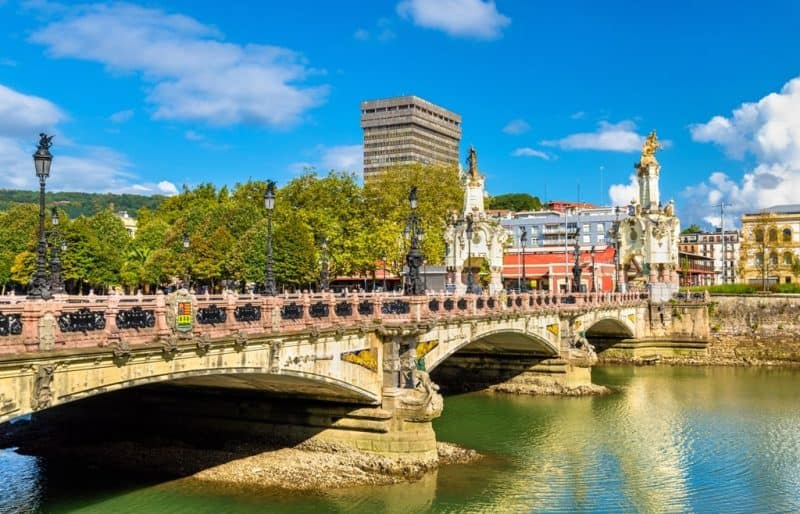
By Victoria from Guide Your Travel
San Sebastián or Donostia as the city is called in the local Basque language is one of the best places to visit in Spain year-round. The city is known for its incredible cuisine and there is a great selection of Michelin star restaurants around.
Before you head out for the evening to try the best restaurants you should go for a hike up Monte Urgull to get the best views of the city from the ancient castle, Castillo de la Mota. If hiking is not for you why not spend the day by one of San Sebastián’s incredible city beaches with white sand and crystal-clear waters?
A trip to Santa Clara Island is also an absolute must when visiting San Sebastián. This tiny island lies sheltered in the bay and is perfect for a picnic or a walk. Click here to read about the 22 best things to do in San Sebastián.
19. Tenerife
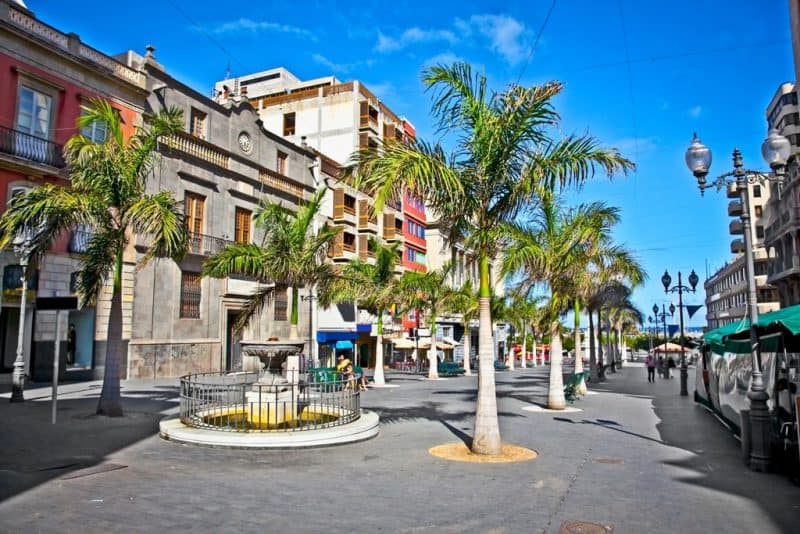
By Nichola from Family Hotel Expert
Tenerife is like a wonderful version of Spain in miniature. An island filled with varied landscapes and bustling cities packed with history and culture – Tenerife family holidays has a little bit of everything. Part of the Canary Islands, set out in the Atlantic Ocean, despite its proximity to Africa Tenerife is unmistakably European and perfectly Spanish.
Tenerife really does have it all, from pristine white sandy beaches to mountain top towns overflowing with character. The island is home to Spain’s highest mountain, the Pico del Teide which allows itself the perfect spot for hikes, mountain bike rides, and rambles. Head to Santa Cruz, the capital not only of Tenerife but the whole of the Canary Islands for beautiful old-world architecture and museums aplenty.
There are so many activities to enjoy across the island from whale watching in the seas to enjoying fun waterparks and theme parks. There’s also a bit of a foodie revolution in Tenerife with some fantastic restaurants across the island. Tenerife is one of those places that one visit simply won’t be enough to see it all.
20. Segovia
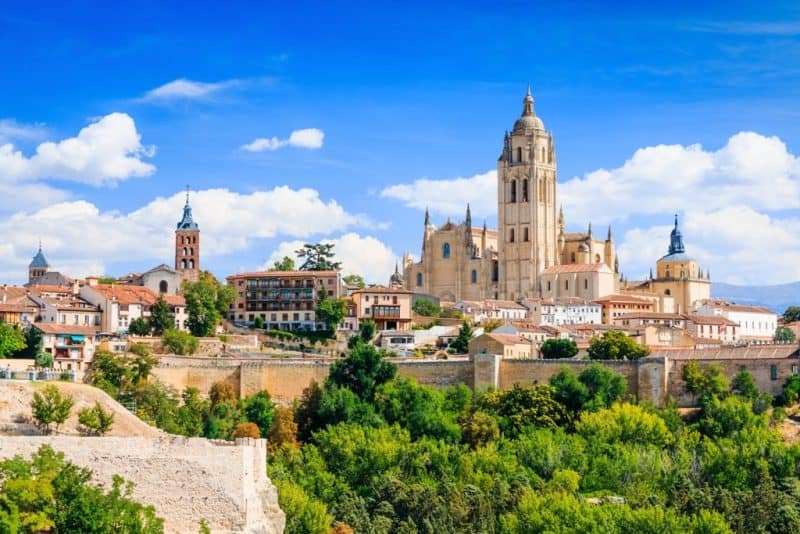
By Coni from Experiencing the Globe
This little town is home of two of Spain’s most famous landmarks, the alcázar and the aqueduct of Segovia. Exploring them will delight your inner child, as well as the adult in you that wants to learn about history and marvel at architecture!
The Alcázar is a medieval castle featuring a moat, a drawbridge, pointy turrets, and a keep, exactly what you imagine a castle should look like. That’s why this particularly stunning place inspired Disney’s Cinderella castle, and it’s on so many people’s bucket list.
The aqueduct, on the other hand, is a work of art and engineering left by the Romans. It has more than 160 arches in it extends for over 15 km.
The city also offers its visitors Romanesque churches and a Gothic cathedral, set in a beautifully preserved Old Town, that has been recognized, together with the aqueduct, as a UNESCO World Heritage Site.
21. Antequera
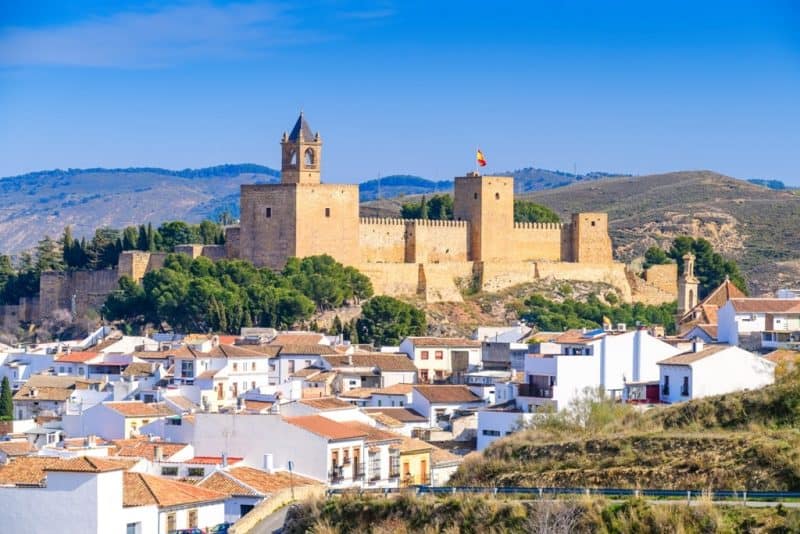
By Joanna from Andalucia in My Pocket
Antequera is an underestimated destination in Spain, often overlooked in favour to its neighbours Malaga, Granada or Cordoba. Antequera is a quiet town nestled below the mighty cliffs of the Torcal de Antequera, a Unesco Heritage site worth exploring on a day trip. There are so many things to do in Antequera, one of them being exploring the Moorish Alcazaba. To get here you will pass through Arcos de los Gigantes, a giant archway which in the past was holding the statue of Hercules, and which still bares Roman inscriptions in the stone.
Antequera is a town that celebrates love. The Pena de Los Enamorados, visible from the highest points of the town, is a rock that bears a tragedy. The legend says that back in the Moorish times, two lovers of different religions preferred to leap to their deaths from the top of the rock when the soldiers sent to capture them got close. To remember the couple and their eternal love, the city has dedicated a statue to them in the center of the main square.
22. Lanzarote
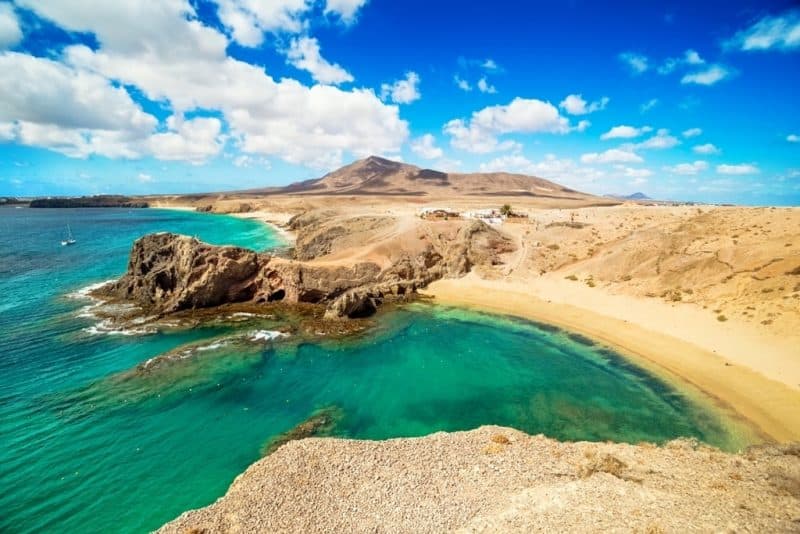
By Megan from Megan and Aram
Lanzarote is one of the most beautiful islands in the Atlantic and it is part of the Canary Islands (Spain). Despite its small size, the volcanic island is home to three large resorts and is a very popular European destination, and one of the best places to visit in Spain.
Most people jet off to Lanzarote for its beautiful beaches, Timanfaya National Park’s lunar landscapes, and the unique food culture where seafood and potatoes run the show.
Cesar Manrique, one of the most acclaimed architects in Spain, was also from Lanzarote and his designs can be found ubiquitously throughout the island. Another popular place to visit is the Teguise Market that occurs each Sunday. It is the perfect place to find handmade souvenirs, Lanzarote wine, and more.
If you’re looking for an adventurous day trip, you can catch the ferry from Orzola to La Graciosa, the newest Canary Island. On La Graciosa, you will find secluded beaches, surreal landscapes, and many snorkeling and scuba diving opportunities. It truly is one of the best places to visit in Lanzarote.
23. Tarragona
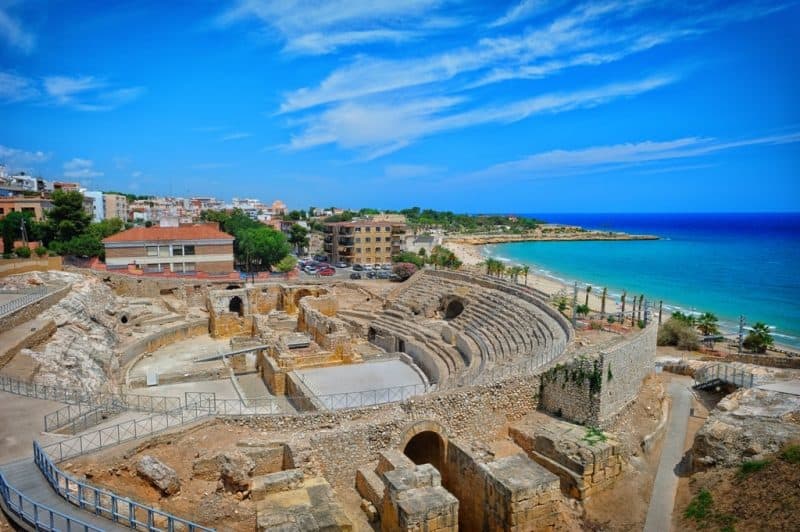
By Claire from ClairePins Travel
The ancient and charming seaside city of Tarragona offers a range of exciting cultural experiences without the crowds found in many large, well-known Spanish cities.
It is conveniently located on the high-speed rail line, which makes it an easy day trip from Barcelona or an interesting stop on the way down the coast towards Valencia.
Tarragona was founded in the 5th century as the first Roman colony in Spain, called ‘Tarraco.’ Many Roman sites can still be explored today, including the ruins of a large seaside amphitheater, which has been designated as a UNESCO World Heritage site.
Most major attractions, including the 12th-century Gothic cathedral, are within easy walking distance, with the exception of the Ferreres Aqueduct, another major Roman site, which requires a 5-minute drive north of the city.
If you are looking for something to eat, try the Central Market for lunch or wander around town for a casual tapas-style dinner with an accent on fresh seafood. In the afternoon you might enjoy relaxing on the beach or exploring the old fishing neighborhoods. Finish your day in Tarragona with a stroll on the oceanfront pedestrian boulevard as the sun sets.
24. Menorca
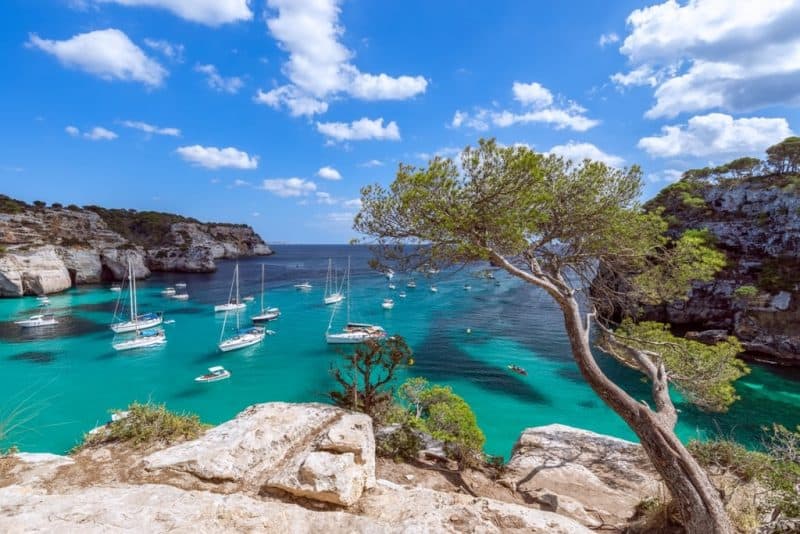
By By Nadine of Le Long Weekend
Menorca is one of the four main Balearic Islands in Spain, located in the Balearic Sea off the east coast of the mainland. But while some of this group of islands have been developed extensively, Menorca remains largely in its natural state. And with its UNESCO Biosphere Reserve status, it’s set to stay that way.
Adorned with historical sites and natural treasures, it’s an absolute pleasure to discover. Walk the circular Cami de Cavalls trail that circles the island and you’ll pass by some of Menorca’s most beautiful beaches, through ancient forests, and by beautiful natural parks and reserves where wildlife congregate. Menorca’s towns and villages are a joy to explore too, each with its own unique character.
Head to Mahon, the main town, to dine under palm trees in open squares, or head to the former capital of the island, Ciutadella to uncover the rich history of the island. Whichever way you choose to enjoy the island, you’ll soon be won over by its unique appeal.
25. Malaga
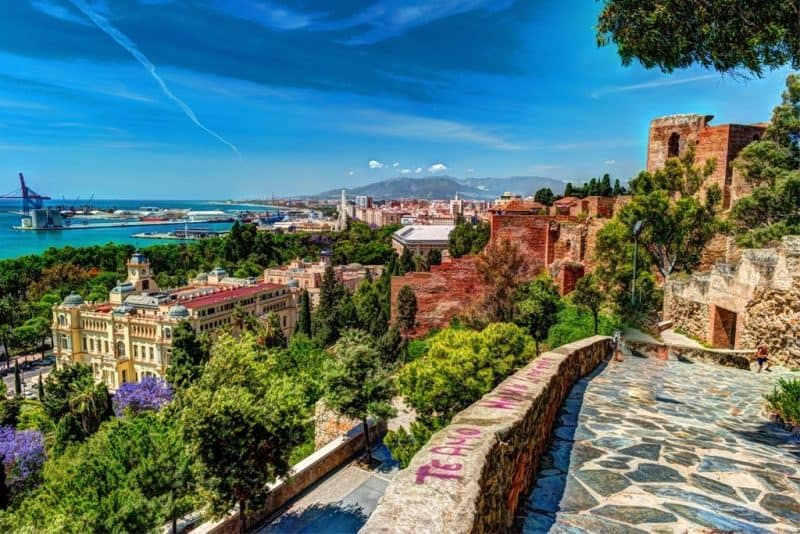
By Sasha Naslin fromThe Alternative Travel Guide
Malaga should definitely be on your Spain bucket list, as it is a city with a fascinating history and tons of attractions. Modern Malaga was greatly influenced by the Islamic period: the Moors ruled Malaga for 775 years.
A reminder of the Arab era is the medieval Moorish palace Alcazaba and a hammam Al-Andalus.
Malaga is a city that has it all: a long sandy beach, an important port, rich culture, and a strong economy. Direct flights from most European capitals make the city very attractive for travelers. Besides, the weather is always pleasant here, so winter Malaga is just as good as summer Malaga.
Malaga has many museums and parks, including an ancient botanical garden. One of the symbols of the city is the painter Pablo Picasso, who was born in Malaga. You can visit his house, as well as the Picasso Museum and the church where he was baptized.
Food lovers will appreciate Malaga for its delicious Mediterranean cuisine. If you come to Malaga, don’t miss to taste fried fish, shellfish, oysters, shrimp, and famous Andalusian wines.
26. Merida
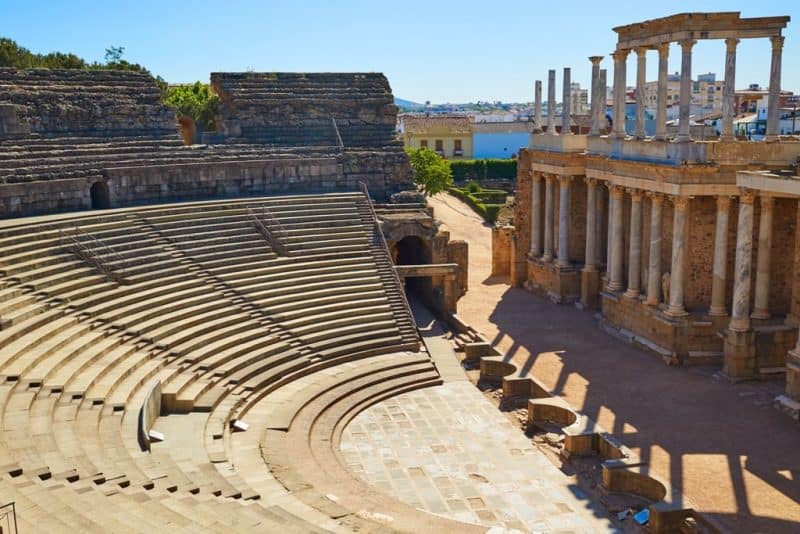
By Alya & Campbell from Stingy Nomads
Merida is a beautiful city in Extremadura, the south of Spain with a long and interesting history. The original settlement, Emerita Augusta was founded by the Romans in 25BC as a place of retirement for veteran soldiers. Merida is a must-visit place in Spain for history and architecture lovers. The number of well-preserved Roman ruins in the city is impressive.
In fact, Merida has more important ancient Roman monuments than any other city in Spain. Attractions not to miss in Merida include the Roman Bridge, Acueducto de Los Milagros, the Circus Maximus, the Amphitheater, and the Temple of Diana. Merida is situated on the Via de la Plata one of the pilgrimage routes of the Camino de Santiago that starts in Seville and finishes in Santiago de Compostela. For its cultural value, in 1993 Merida was declared a UNESCO World Heritage site.
Spring is the best time to visit Merida when the fields surrounding the city and the ruins are covered in flowers.
27. Bilbao
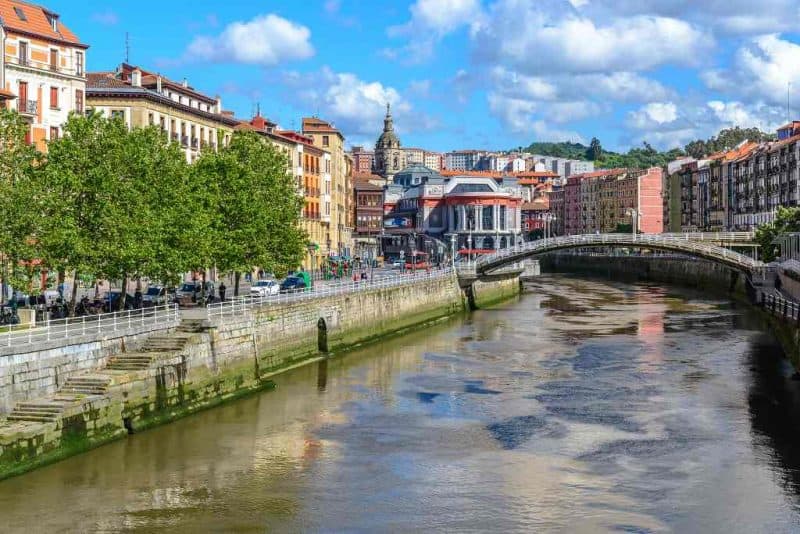
By Leyla from Women on the Road
For years Bilbao was bypassed by visitors to Spain. Its politics were violent, and other cities like Barcelona, Madrid, and Sevilla seemed more inviting. But then two important events threw open Bilbao’s doors: the Guggenheim museum was inaugurated and the separatists agreed to a ceasefire. By 2011, Bilbao was bursting with welcome.
The city is a contrast of old and new and not far from the architecturally stunning Guggenheim you can stroll through the ancient streets of Casco Viejo, where life goes on much as it has for years. In the evening, locals go bar-hopping – known as txikitear, a uniquely Basque custom of sampling different wines and a variety of pintxos.
Bilbao, like the rest of the Basque region, is one of Spain’s foodie heartlands. Beyond the pintxos and exquisite restaurants, head for the Mercado de la Ribera, Europe’s largest covered market and an architectural curiosity.
For a deep dive into Bilbao’s contrasting cultures, there’s Azkuna Zentroa, a cultural center (and former wine warehouse) where there’s always something to see. Sprinkled throughout the city are extraordinary examples of Art Nouveau, alongside modern creations such as Calatrava’s White Bridge.
A visit to Bilbao is an exploration of culture, gastronomy, architecture, and art. The city will not leave you indifferent.
28. Torrevieja Pink Lake
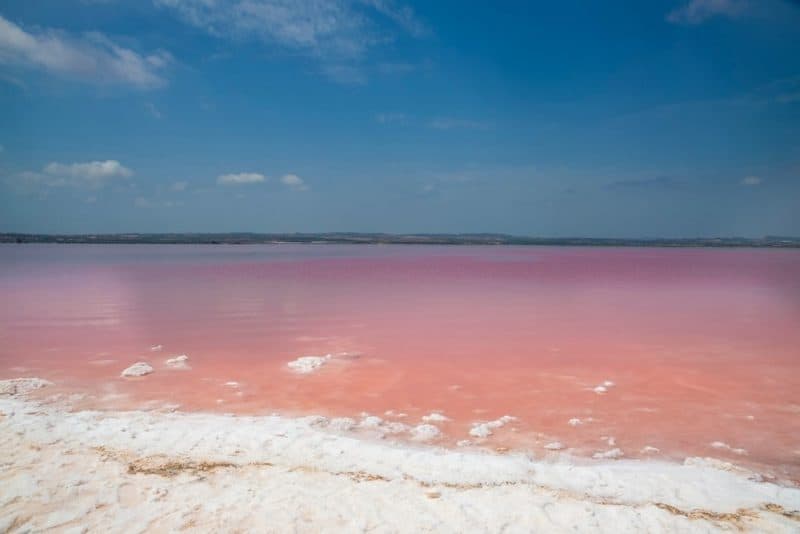
By Baia from Red Fedora Diary
Torrevieja Pink Lake is definitely one of the best places to visit in Spain if you haven’t seen a bubble-gum pink lake. In Spanish, this salt lake is called Laguna Rosa gets the color from algae and bacteria that grows in salty spaces.
You can easily visit the lake from Torrevieja or a day trip from Alicante. The only way to get closer to the lake is by driving a car as the public transport doesn’t go to the lake.
The Pink Lake is quite big, with different entrances marked on Google Maps. One of them is via Via Verde de Torrevieja and Calle Munera streets, where the shore is clearer, enabling you to get closer to the lake.
It’s free to visit, but be cautious as bathing in the salty lake is forbidden and might result in a fine. However, some sources say it’s allowed.

